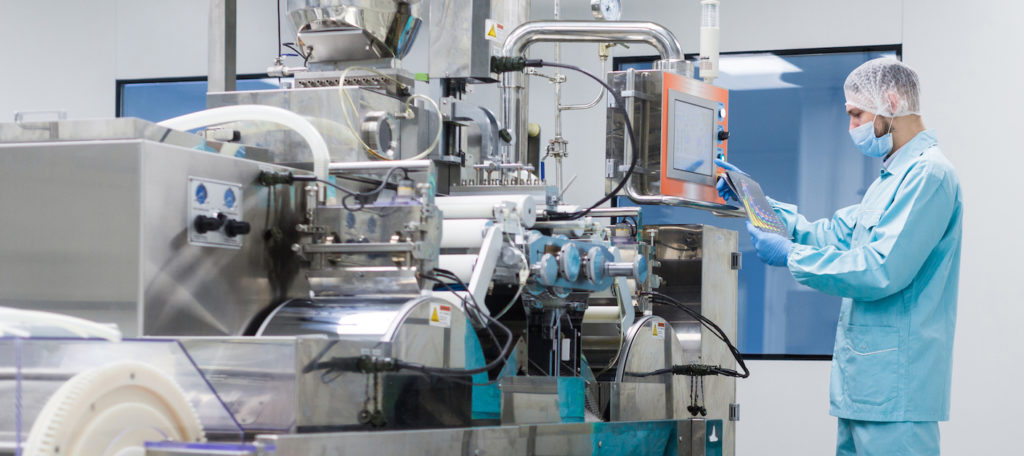
In any manufacturing sector, standardization of assembly processes and sequencing is a critical tool for honing processes, improving efficiency and consistency, and reducing error rates. It is especially critical for today’s increasingly complex and customized medical devices.
That customization presents significant challenges. For each variation in a prosthetic or pacemaker, there are additional pain points to address. Standardization becomes increasingly elusive, and new variables are introduced that make achieving the high quality standards required of medical devices that much more difficult.
Today, however, medical device manufacturers have a new weapon in their operational arsenal. For the first time, new augmented reality (AR) tech solutions can establish a no-faults-forward operation and implement efficient economical solutions that can be consistently replicated at scale across multiple workstations, shifts or factories—a feat that has historically been much easier said than done.
Augmentation and standardization
Augmented reality encompasses a range of systems and technologies that deliver real-time, hands-on guidance to ensure that tasks are completed safely, correctly and efficiently. The best AR solutions provide that real-time guidance with dynamic, interactive and adaptive functionality. By directing an operator through a series of prompts, AR tech can standardize complex medical device assembly sequences, saving time, money and even lives.
The best way to think about the difference between AR and traditional paper or monitor-based directions is to consider the ways that modern-day GPS apps in our smartphones and mobile devices differ from “old school” handheld maps. Unlike a printed map, a GPS app updates its instructions to the user based on real-time events. If you make a wrong turn, the app “knows,” and redirects users accordingly. Drivers can also get both visual and audio guidance, allowing them to keep their hands on the wheel and their eyes on the road.
The implications of this kind of adaptive guidance and instruction in a manufacturing environment is profound. Using a number of different technologies, the right augmented reality platform can guide medical manufacturing professionals step-by-step through even the most complex assembly and production processes.
Tools and technology
A new generation of AR tools projects a digital operating “canvas” directly onto a work surface. The virtual overlay can be used to provide medical professionals with detailed instruction, including audio and visual prompts, guidance, pacing and direction.
In a medical manufacturing environment, precision isn’t just important–it’s absolutely essential. In some cases, it might literally be the difference between life and death. One of the ways in which AR can help industry professionals achieve that level of precision is by integrating a projection-based AR solution with existing tools and equipment, such as wrenches, machine vision cameras and collaborative robots.
The result is a level of confirmable precision and standardization that was previously unattainable for most complex manufacturing and assembly tasks. For products and processes with extremely tight tolerances, the sophisticated sensors and high-tech tools are capable of achieving an extraordinary level of detail and precision.
Error-free operation
In an industry where the annual death toll from medical errors runs into hundreds of thousands of lives, the cost of subpar quality or operational errors could not be clearer. The standardization, precision and efficiency afforded by AR technology solutions reduces liability, mitigates risk for medical device manufacturers, and ultimately improves health outcomes for patients.
One of the most important features of the best AR solutions that makes that kind of standardization possible is No Faults Forward functionality that has been “baked in” to the system. This ensures that the correct steps have been completed (in the correct way) before allowing the user to move on to the next step in the process. This virtually eliminates most sources of human error, and ensures that the right parts, processes and sequences are being used at all times.
Extraordinarily detailed monitoring, verification and tracking is also possible with high-quality AR solutions. Not only is every step in the process monitored and recorded, but a digital “birth certificate” can be generated for each part and product. Consequently, any issues or procedural bottlenecks can be quickly identified and addressed.
Customization and efficiency
Much of the power and utility of AR would be wasted if these systems were not flexible to be used in a range of different applications and processes. With medical devices more complex than ever, AR solutions that can easily be customized to accommodate new parts, processes or programs are critically important.
The best of this new and rapidly evolving category of AR solutions are fully programmable, allowing users to designate one of a series of preset sequences or assembly processes quite literally with the push of a button.
Additionally, AR tools can reduce cycle time. By projecting the clock directly onto the workstation, operators are focused on the task at hand and can work more efficiently to improve their cycle time. As an added benefit, the reduced cycle time and efficiency gained from projection AR can lower stress levels in employees while also keeping them highly engaged, challenged and productive.
For medical device manufacturers, augmented reality is the very definition of a game-changing technology: a path forward that directly addresses the standardization challenges facing the industry, a mechanism for achieving the necessary consistency and quality, and a tool for overcoming customization challenges faced by medical device manufacturing professionals.

